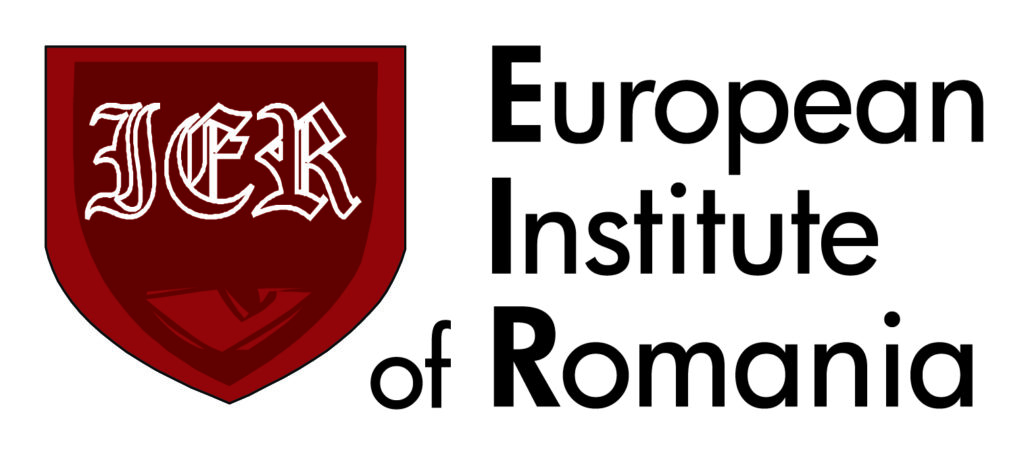On the fairytale maps of geopolitics, China’s strategic activities are already networking India. The Indian subcontinent is planned to be entangled a “string of pearls” – a number of strategic ports in India’s neighbouring countries, and an economic corridor built with money that runs through Pakistan from the PRC. Although such a scenario cannot, of course, be ruled out, hard evidence indicates that the road to it is very long.
Firstly, the “string of pearls” mentioned for years simply does not exist. The development status of each of these ports in South Asia varies. What also varies is the degree of involvement of the PRC in them and that no ChALW forces can be formally stationed in any of them. Similarly, the China-Pakistan Economic Corridor (from now on addressed as CPEC), so beautifully presented on the maps, is not actually a corridor and, so far, has overwhelming economic significance, but not strategic in nature.
This does not mean that the development of this initiative is not relevant to India. Three challenges need to be considered here: (1) the importance of the CPEC for New Delhi’s territorial claims; (2) the role of the CPEC in the ongoing Sino-Pakistan reproach against India and (3) the possible role of the CPEC in the event of a conflict with India. The third point, let us point out right away, is, for the time being, the song of the future. Yet until that happens, in the coming years the CPEC may, above all, be a measurable problem in Pakistan’s relations with India not because of the flow of troops, but because of the flow of water.
As mentioned above, contrary to its name, CPEC is not a corridor. It does not connect various points in China and Pakistan with a network of transport infrastructure. Instead, CPEC is a “bag” into which various construction projects implemented or planned to be undertaken in Pakistan are thrown in, financed by Chinese loans (and therefore usually carried out with the participation of Chinese construction companies). Perhaps one day any such project will be included in CPEC, and thus this initiative will simply be a list of Chinese loans for such purposes. It is a narrative process similar to that carried out in relation to the Belt and Road Initiative – to which various (implemented or planned) initiatives financed by PRC loans are “hooked up” in such numbers that they do not form a single concept or network of lines.
This does not mean, of course, that CPEC does not matter – quite the contrary. One of the key aspects of CPEC in the first phase was the construction of coal-fired power plants (the construction of two new units at the Karachi nuclear power plant with Chinese aid is not included in CPEC for some reason). These projects have not been delayed and, according to some sources, have already reduced electricity shortages and the frequency of power failures in Pakistan. However, regardless of the importance of the CPEC in these and other aspects, and regardless of its advantages and disadvantages, it must be acknowledged that there is no ambitious project underway to connect China to Pakistan with a new land transport infrastructure project.
Disputes over water and water for disputes
So why the unfavourable statements of some Indian commentators, including the remarks that the CPEC “runs” through Indian territory? In some cases, Indian observers also succumb to the magic of wishful-thinking maps that draw the CPEC as a network of routes. Above all, however, at a diplomatic level, some of the initiatives within the CPEC concern an area that New Delhi considers as its own. Most of them concern the construction of hydroelectric power plants and accompanying dams.
The first one is a project to build a hydroelectric power plant in Kohala. The site is located in a Pakistan-controlled part of Kashmir. Islamabad calls these lands Aztad Kashmir (“Free Kashmir”) and India calls them Pakistan-Occupied Kashmir (“Pakistan-occupied Kashmir”). The second is a more recent project: to build another hydroelectric power plant in the same area – in Azad Pattan (the agreement was signed in 2020). The third project is the already completed fibre optic cable from Rawalpindi to Chandzerab (see map here). It runs, among other areas, through the territory of Gilgit-Baltistan, another area that historically belonged to Jammu and Kashmir, which India considers as its own and which is under the control of Pakistan. In 2020, an agreement was also signed to build a fourth hydroelectric dam in the Diamer-Bhasha region, also in Gilgit-Baltistan. This project has not yet been included in the CPEC and it is unclear whether it has been included in this corridor (however, New Delhi does not give importance to this fact – nor did it receive more attention from Islamabad or Beijing). The participation of the PRC in the fourth hydroelectric power plant project on these disputed lands, under the initiative of the Karakorum International University (KIU) Hydropower Project in Gilgit-Baltistan – and the construction of the regional road from Gilgit to Ćakdara – is also under consideration.
Unsurprisingly, when Islamabad and Beijing were communicating on these initiatives, they did so completely without New Delhi. In 2020, for example, the Ministry of Foreign Affairs of India, in response to the announcement of a dam in the Diamer-Bhasha region, stated that Pakistan was making “material changes in the Indian territories that are under its illegal occupation”. These allegations were naturally disagreed with by the Government of Pakistan and the spokesperson of the Chinese Foreign Ministry.
Diplomatic and/or legal disputes around these dams will become more and more difficult in the coming years, as none of them has so far begun to arise. The most advanced is the Kohala Power Plant Project. In mid-2020, it was claimed that the acquisition of land for its construction had begun (the initiative was delayed by legal disputes around this process). Moreover, New Delhi is not vulnerable to two of these projects: the power plants in Kohali and Azad Pattan are to be built on the River Jhelam, whose sources lies in the mountains of India, and therefore New Delhi could limit the flow of water to them.
However, any such move will end in an international dispute, as it may be a violation of the Indian-Pakistani Treaty on the Division of Indus Waters. The Indus River and its main tributaries (not only the Jhelum) flow through India before they enter Pakistan, and this treaty regulates the sharing of their water usage. In practice, therefore, each of the above mentioned Pakistani dams and power plants will use the waters coming from India. However, not every one of them has similar possibilities for India at present. Already now, Islamabad and New Delhi have been in a legal clinch for years on the Indian hydroelectric power plant on the river Kisenganga/Nilam, which is a tributary of the river Jhelam. The dam that serves this power plant blocks a part of the water that would eventually flow to Kohala and Azad Pattan. The Kisenganga dam, completed in 2018, according to India’s understanding, is not a violation of the treaty. International arbitration in this matter has also been more on the side of New Delhi than Islamabad. This situation now gives India greater opportunities to weaken the projects in Kohala and Azad Patten than in Diamer-Bhasha alongside KIU. The dispute is, therefore, part of the well-known and crucial “war for water” between India and Pakistan. Such disputes are now more important to New Delhi in its policy towards Islamabad than the CPEC as such.
Regardless of these tangible problems, from a purely diplomatic point of view, New Delhi will be forced to oppose any projects that China would support in the mountains of Pakistan’s Kashmir: from those that pose a challenge to India and those that are essentially meaningless to them, as well as those that remain on paper, so as not to leave the impression that it has abandoned its claims. And if the CPEC one day really becomes a corridor between the PRC and Pakistan and if it really connects the two countries by land transport infrastructure, it will have to pass through Gilgit-Baltistan (only there is Pakistan bordering the PRC), the lands that New Delhi will not cease to consider as its own, and that Islamabad does not intend to give up for good.
This diplomatic aspect in itself does not change anything in India’s already bad relations with Pakistan and the PRC. The dispute over Kashmir is not new, nor is it new that China is on the side of Pakistan (although the part of Kashmir to which Beijing claims to be entitled to is more complex but this is a completely different topic). Thus, the issue of the CPEC projects that are currently underway in Pakistan’s Kashmir is not so much a new confrontation as it is basically just another spark in the fire that has been burning heavily for decades and which has almost no one hopes of being extinguished now
A long friendship and a friendly debt
The same connotation applies to the role of the CPEC for the whole of Sino-Pakistani relations. Relatively new, because announced in 2013, the CPEC is by no means the beginning of the friendship between the PRC and Pakistan; nor is it a factor that makes the two countries join hostilities against India. After all, both processes have been going on for decades. If we tried to imagine the current state of Beijing-Islamabad relations without all the loans transferred and promised under the CPEC, the PRC would probably stand shoulder to shoulder with Pakistan against India as much.
The new aspect is therefore not the Chinese-Pakistani relations themselves, but the CPEC’s cause of their tightening. Islamabad has never been so indebted to the PRC before. The exact scale of this financial dependence is unknown, but even the most conservative estimates indicate that it is huge. In December 2018, the PRC embassy in Islamabad claimed that so far agreed loans for CPEC projects are $18.9 billion USD, but only in relation to already completed projects and without including energy projects (which are one of the most costly elements of the whole initiative). My estimates of February 2019, based on press and government sources, indicate a total of $22 billion USD (including ongoing and planned projects, together with energy projects).
First of all, however, these sums only apply to projects that are part of the CPEC and not all of them. For example, Pakistan lent another $6.5 billion USD for the construction of two nuclear power plant units, mentioned earlier. Moreover, since those calculations, there has been slow progress in concluding further contracts and negotiating further projects, but unfortunately, Beijing and Islamabad have recently stopped revealing much information about them (such as the value of the loan). In 2020, an agreement was made to build this dam in the Diamer-Bhasha region: its cost will be enormous (estimated at $14-15 billion USD), but it is still unclear whether and to what extent Pakistan will borrow from the PRC for this purpose (according to some media). The PRC also offers, among other things, $6.8 billion USD for the expansion and modernization of Main Line-1 (one of Pakistan’s main railroad routes). However, it cannot be ruled out that the government in Islamabad, worried about the state of its debt, will decide to lend only a part of this sum or will win at least slightly more favourable repayment terms. It is also important to add that all these figures summarize the value of the loans and not the amount to be repaid, which Pakistan is trying not to disclose and which we are not even able to estimate without knowing the provisions of the contracts.

The CPEC has therefore become one of the elements of Pakistan’s considerable financial dependence on China. No one expects Pakistan to adopt a more conciliatory attitude towards India anyway; no Chinese money is needed for Islamabad to remain hostile to New Delhi. Also, the statements made by some Indian and American commentators that, as a result of borrowing, Pakistan is already becoming China’s “colony” or “quasi-colony” are far exaggerated and unjust.
It can be assumed that with its growing dependence on the PRC, Pakistan will have greater difficulty in taking steps that Beijing would not like. Islamabad, who is so eager to defend the oppressed Muslim communities (from Palestine through Kashmir to Burma), pretends that the problem of persecution of the Uighurs in China does not exist. During an interview for TRT World, Prime Minister Imran Khan said he “had no time” to read about it. Even those radical Islamic groups in Pakistan that are probably in contact with his “deep state” avoid this topic. Other troubles in relations are also quickly swept under the carpet. An example of this was the beginning of the current government (of the PTI party and its coalition partners): the initial, individual doubts whether the CPEC is worthwhile, whether the scale of the debt is not too great, and the benefit to Pakistani companies is too small, were quickly covered up with bright tapestries praising the friendship with Beijing.
From an Indian perspective, another interesting example was the publication of a “new political map of Pakistan” in 2020 (which turned out to be nothing new). Prime Minister Khan and Foreign Minister Qureshi did this to highlight Pakistan’s rights to all of Kashmir, but the map leaves an empty space where PRC claims begin. It was only found that the border was not yet established here. Therefore, once again, it is clear that Islamabad is ready to continue arguing about Kashmir with New Delhi, but pretends not to have a contentious position with Beijing about this area.
The extent of Pakistan’s ties with the PRC is, of course, influenced by various factors: not only debt but also dependence on other types of aid (including, for example, arms imports, of which China has become Pakistan’s main supplier) and lack of international support from any other power (since the partnership with the U.S. is practically over). Another important aspect for India is the role of the Pakistani armed forces in the CPEC and, more broadly, in developing Sino-Pakistani relations. The military clearly wants to have an overwhelming influence on this area, as well as to make material profits from it. In 2019, General Asim Saleem Bajwa, who retired, was chosen the president of the new CPEC Authority. In 2020, it was decided that one of the entities responsible for the construction of the dam in the Diamer-Bhasha region will be military construction company. The Pakistani armed forces offer one of the most anti-Indian environments in Pakistan – the main justification for their funding and position is, after all, the need to defend the country against India. This arrangement does not bode well for New Delhi.
Navy base and raw material base
The myths about CPEC, as a strategic corridor, focus on the port of Gwadar (in Pakistan’s Baluchistan). According to the same myths, this port is the pearl in the Chinese necklace suffocating India. This port is sometimes presented as an emerging base for the Chinese Navy. In this ambitious vision, the whole CPEC is supposed to be an alternative transport route allowing for transports to and from China to bypass India, the Malacca Strait and the South China Sea. Transports between the Middle East and the PRC could therefore take place by sea to Pakistan and then on land to China.
It has already been partly explained why this is an abstraction for the time being. The mountain roads connecting south-western China with Pakistan are currently absolutely unsuitable for transporting large volumes of goods between the Middle East and China, including key energy resources. This would be neither cost-effective nor safe, and perhaps even not competitively faster. However, the defenders of this “strategic vision” have the right to demonstrate that price and security issues change radically in the event of war, when the Chinese need to keep their shipments away from India or the sensations of power in the waters east of them. This prospect of conflict would justify such a corridor. However, if such a hypothetical war were to break out now, the highway through the Karakoram Mountains would not be suitable for this purpose anyway, as it is not currently being extended (except for a distance of about 180 km between Thakot and Havelian). The assessment of such plans should therefore await the possible construction of new land transport infrastructure between these countries.
Gwadar itself is, for the time being, a port under construction in the middle of nowhere, where “geo” prevails over “strategy”. The city of less than 100,000 people is plagued by water and electricity shortages, it remains poorly connected to the rest of Pakistan, and it lies in a province with separatist tendencies. Attacks by armed groups of the Baluchs have repeatedly hit not only Pakistan’s security forces but in rare cases also Chinese citizens. The vision of Gwadar as a transport hub and the start/end of the land route from/to China is, therefore, a foggy dream for the time being. All the more so because, if such transport is necessary, Pakistan has a much more developed and better connected port in Karachi with the rest of the country. Indeed, while the vision of Gwadar as a transport centre on the land route to China is distant and uncertain, the vision of this particular port as a naval base is somewhat stronger.
In the assessments of the CPEC and Gwadar, noisy and general geopolitical and strategic visions sometimes outweigh perhaps less interesting but equally important calculations of such aspects like the value of loans and their interest rates or, for example, the conditions of use or ownership of projects after their completion. Meanwhile, the latter issues prevail in most serious discussions about CPEC. In short, for the time being, there is no evidence that the CPEC is primarily of strategic importance to China; that its projects are being prepared for war efforts or war. It is primarily an economic project, on which Chinese entities are supposed to make money by granting loans or participating in construction and subsequent use. Nothing surprising about that.
But perhaps Gwadar will indeed turn out to be an exception to these statements. In 2018, it was decided that the purpose of building an airport in this city and the highway leading to it would be an interest-free loan by Chinese entities. This is not proof of a military use, but it is a rare case of denying oneself the possibility of making more money, which only suggests, although ultimately does not prove, the possibility of another use of the port. In 2019, however, I wrote to the Diplomat that there is no evidence that Gwadar is already a Chinese base. However, there are indications that it is of growing importance for the armed forces of Pakistan already present there (as evidenced, for example, by a very interesting report by Pakistani journalist Maqbool Ahmed for The Herald). Some of those who criticized my text about the commentators pointed out that, in fact, while there is no evidence of the presence of Chinese forces in Gwadar itself as a port; they see the appearance of Chinese forces in the district of Gwadar, namely, in the coastal town of Jivani to the west of Gwadar. Such claims, however, should be carefully verified, because it is difficult to confirm them based on open sources. In the Western press, the peak of reports on the role of the Jivani as a base for the Chinese Navy was in 2018, but their original source was the unreliable Washington Times newspaper.
The use of Gwadar or its environs, whether by China or Pakistan itself, would certainly make sense from the perspective of the Indian threat. Pakistan’s most important port and its economic heart, the already mentioned Karachi, is close to India and is therefore exposed to their attack. The District of Gwadar, on the other hand, lies in the undeveloped areas, unstable and remote from economic centres, but at the same time as far away from India as possible on the Pakistani coast. One thing is therefore certain, regardless of the direction of interpretation, that the development of projects under CPEC, including Gwadar, is certainly worthwhile further observation.

IF YOU VALUE THE INSTITUTE OF NEW EUROPE’S WORK, BECOME ONE OF ITS DONORS!
Funds received will allow us to finance further publications.
You can contribute by making donations to INE’s bank account:
95 2530 0008 2090 1053 7214 0001
with the following payment title: „darowizna na cele statutowe”

































Comments are closed.